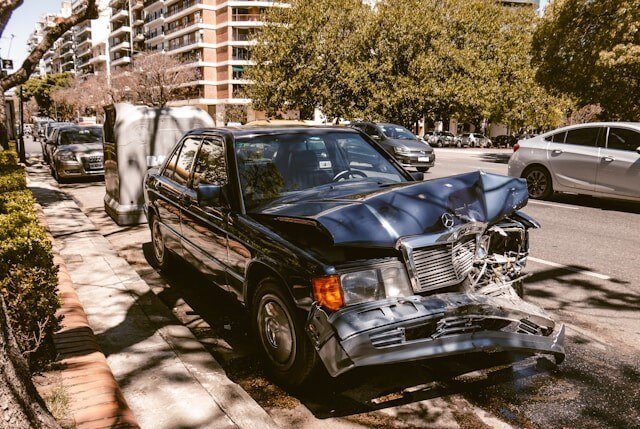After How Many Years Claim-Free Does Accident Forgiveness Apply?
August 9, 2025 | by ltcinsuranceshopper



If you’ve been driving for years without a single accident, you’ve earned more than just bragging rights, you may also qualify for one of the most valuable benefits in auto insurance: claim-free accident forgiveness. For many drivers, this perk can mean the difference between keeping an affordable premium after a first accident and facing a sudden spike in rates.
But here’s the part most policyholders misunderstand, the number of claim-free years you need before accident forgiveness applies varies widely depending on your insurer and your state.
The truth is, knowing exactly when you qualify can save you a small fortune.
What Is Claim-Free Accident Forgiveness?
How does accident forgiveness work in the United States? Claim-free accident forgiveness is a feature offered by many insurance companies that prevents your rates from increasing after your first at-fault accident. Essentially, if you’ve been a safe driver for a set number of years, your insurer agrees to “forgive” the first incident on your record.
The goal is to reward safe drivers, promote loyalty, and protect you from the financial shock of an accident-related premium hike. This can be significant. In Florida, the average premium increase after an at-fault accident is 42%, or about $879 annually, according to 2024 industry data.
However, it’s not automatic for everyone. You must typically meet strict claim-free driving requirements before your insurer will grant it.
Also Read:
How Many Years Claim-Free Before Accident Forgiveness Applies?
Here’s where things get interesting and sometimes frustrating for policyholders. There is no universal rule. Insurers set their own guidelines, which often vary from three to five years of continuous claim-free driving.
- Florida: Most major insurers, including GEICO and State Farm, require five consecutive claim-free years for automatic accident forgiveness eligibility. Some offer it as an add-on you can purchase earlier.
- California: Typically requires three to five years of clean driving. State Farm, for example, offers it after three years to certain policyholders, but Progressive leans toward four to five years.
- Louisiana: Commonly set at three years, though some smaller regional insurers are more generous.
- Michigan: Tends to be stricter. Many carriers require five years due to the state’s historically high accident rates and no-fault insurance costs.
It’s essential to note that “claim-free” means no at-fault accidents. Some insurers also exclude comprehensive claims (like a cracked windshield) from the calculation, while others do not.
How Accident Forgiveness Saved My Client $1,200 in Florida
Several years ago, I worked with a client named Anthony in Orlando. He had been with the same insurer for over a decade and had an impeccable driving record; zero at-fault accidents in 11 years.
One rainy evening, Anthony was involved in a minor fender bender after hydroplaning. The damage to the other driver’s vehicle was about $3,800. Anthony was worried about the financial hit, knowing rates in Florida can skyrocket after even a small claim.
Because he had maintained over a decade of claim-free driving, his insurer immediately applied accident forgiveness to his policy. His premium stayed exactly the same. Without it, his annual rate would have jumped from $1,900 to roughly $3,100, a 63% increase costing him more than $1,200 extra over the next year.
This is why I tell every client: the longer you maintain a clean record, the more you protect yourself from future rate hikes.
How States Differ in Claim-Free Requirements
Even within the same company, accident forgiveness policies for claim-free years can differ by state because of local laws, insurance regulations, and risk levels.
| State | Typical Claim-Free Period | Notable Insurer Practices | Average Post-Accident Rate Increase |
| Florida | 5 years | GEICO, State Farm require 5; Allstate offers purchasable forgiveness sooner | +42% ($879) |
| California | 3–5 years | State Farm offers at 3; Progressive often requires 4–5 | +38% ($790) |
| Louisiana | 3 years | Regional insurers sometimes offer after 2 years | +47% ($910) |
| Michigan | 5 years | Due to no-fault system, most require 5 | +45% ($980) |
Why the Number of Years Matters More Than You Think
Many drivers don’t think about accident forgiveness until they need it and by then, it’s too late. If you switch insurance companies, your claim-free streak may reset, meaning you’ll have to wait the full qualification period again.
I once worked with a Michigan driver who switched from Allstate to Progressive for a lower premium. Just 18 months later, she had an at-fault accident. Because she hadn’t yet reached the five-year claim-free mark with Progressive, she faced a nearly $1,000 annual rate hike. Had she stayed with Allstate, her accident would have been forgiven.
That’s why I tell clients: don’t just compare premiums—compare the accident forgiveness rules, too.
Claim-Free Accident Forgiveness: Purchased vs. Earned
There are generally two ways to get accident forgiveness:
- Earned through claim-free driving: You must remain accident-free for the set number of years your insurer requires. This is the most common method and is typically free once you qualify.
- Purchased as an add-on: Some companies let you buy accident forgiveness from day one of your policy, but it usually adds to your premium. This can be worthwhile if you’re a high-mileage driver or have a history of accidents.
In Florida, purchasing it upfront often costs between $40 and $120 annually. In high-rate states like Michigan, it can run higher.
How to Maintain Your Claim-Free Status
Maintaining your claim-free streak isn’t just about avoiding major collisions—it’s about being proactive:
- Avoid small at-fault claims: Sometimes paying out of pocket for a minor repair is better than filing a claim that resets your clock.#
- Drive defensively: In congested states like California and Florida, staying alert is your best asset.
- Be aware of comprehensive claims: Ask your insurer if they count glass or weather-related claims against your accident-free record.
Does Accident Forgiveness Apply to Multiple Accidents?
Generally, no. Accident forgiveness only applies to the first at-fault accident after you qualify. If you have another accident soon after, expect your rates to rise. Some insurers, however, offer “extended” forgiveness if you go another claim-free period after the first forgiven accident.
How Do I Know if I Have Accident Forgiveness With My Insurer?
Check Your Policy Documents
The easiest way to find out if you have accident forgiveness is to review your auto insurance policy. Look for terms like “accident forgiveness,” “first accident waiver,” or “forgiveness coverage.”
These details are often listed under the benefits or endorsements section. If your policy includes this feature, it should also state whether it was earned through claim-free driving or purchased as an add-on.
Contact Your Insurance Agent or Company
If the documents are unclear, call your insurance provider directly. Ask, “Do I currently have accident forgiveness on my policy, and what are the qualifying conditions?”
Some insurers automatically grant it after three to five years claim-free, while others require you to buy it separately.
Verify State and Company Rules
Accident forgiveness eligibility can vary by insurer and state. For example, companies in Florida often require five claim-free years, while in California, it may apply after three. Knowing your state’s norms helps you understand whether you’re eligible now or still need time to qualify.
Bottom line: Always confirm your accident forgiveness status before you need it. This knowledge can save you hundreds of dollars after your first at-fault accident.
Also Read:
Final Thoughts
From my decade in the insurance industry, I can confidently say that claim-free accident forgiveness is one of the most undervalued benefits in auto insurance. The difference between qualifying and not qualifying can mean hundreds or even thousands of dollars in savings.
Whether you live in Florida, California, Louisiana, or Michigan, the principle is the same: the longer you drive without an at-fault accident, the more leverage you have with your insurer. And in states where insurance premiums are already high, that leverage is golden.
If you’re shopping for a policy or thinking of switching, don’t just look at the monthly rate. Ask: After how many years claim-free does accident forgiveness apply? The answer could save you a lot more than you think.
RELATED POSTS
View all



